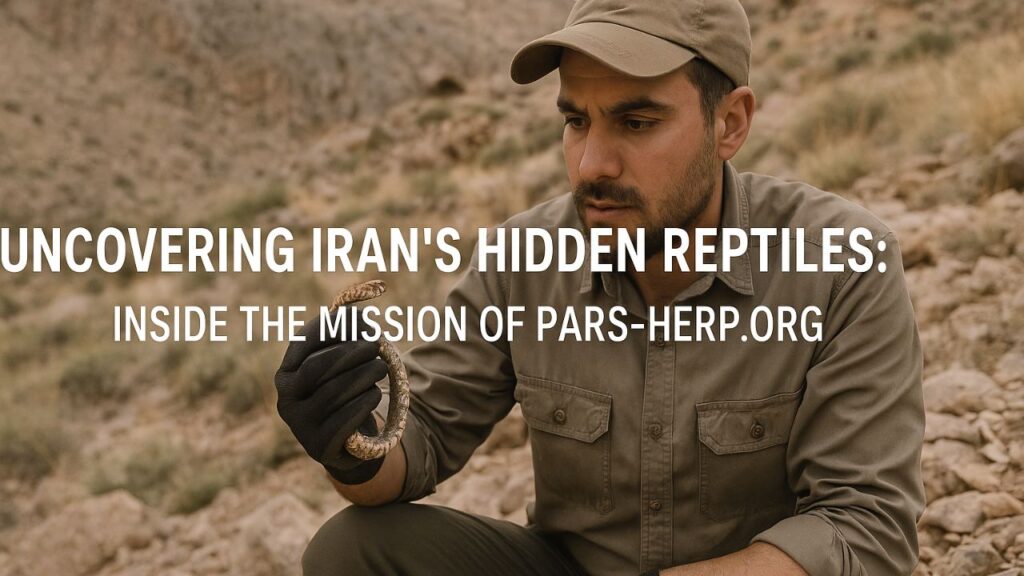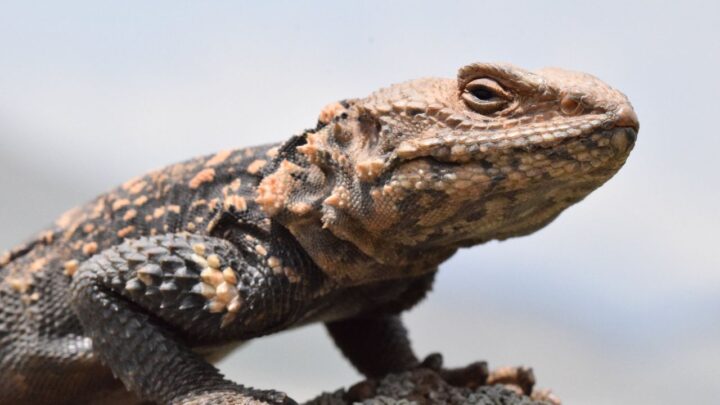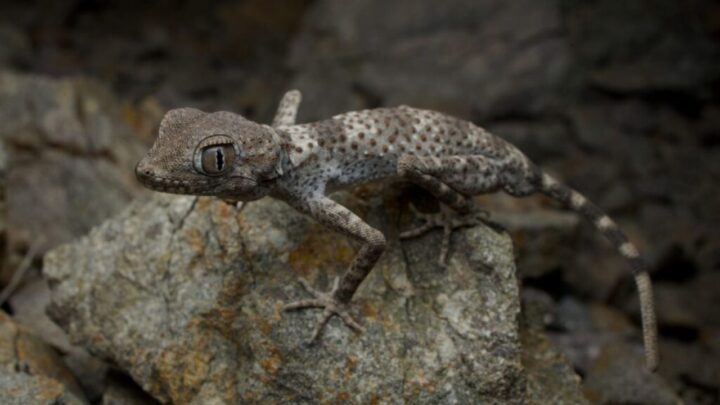Iran Hidden Reptiles – Iran, a country known for its rich history and stunning landscapes, is also home to a diverse yet largely unknown population of reptiles. From arid deserts to lush forests, the country’s ecosystems shelter rare species of snakes, lizards, geckos, and other reptiles that remain undiscovered by most of the world. At the forefront of exploring this hidden biodiversity is Pars-Herp.org, a non-profit initiative dedicated to the research, documentation, and conservation of Iran’s reptiles and amphibians.

The Origins of Pars-Herp.org
Founded by a group of passionate herpetologists and conservationists, Pars-Herp.org was launched with a singular mission: to catalog and protect Iran’s lesser-known reptilian species. Recognizing that scientific data on Iran’s herpetofauna was fragmented or outdated, the team began comprehensive fieldwork, often in remote and dangerous terrain, to gather accurate data and raise public awareness.
Key Objectives of Pars-Herp.org:
- Scientific exploration of reptiles and amphibians in Iran.
- Building a centralized online database of species data.
- Educating local communities about the ecological importance of reptiles.
- Collaborating internationally for conservation initiatives.
Exploring the Unknown: Fieldwork and Challenges
The research teams at Pars-Herp.org venture deep into deserts, caves, rocky mountain ranges, and isolated valleys to find and study elusive species. The work is often physically taxing, with long days spent under the sun, navigating difficult terrain, and camping in remote locations.
Major Challenges Faced:
- Harsh climate conditions in desert and mountainous areas.
- Political and logistical hurdles for accessing certain protected regions.
- Lack of local awareness, which sometimes results in reptiles being killed out of fear.
Despite these difficulties, the researchers have made remarkable progress. They’ve identified dozens of species previously undocumented in Iran, some of which are believed to be entirely new to science.

New Discoveries: Expanding Global Knowledge
Pars-Herp.org has contributed significantly to the global understanding of reptile biodiversity in the Middle East. Many of their findings have been published in international journals, shedding light on species such as:
- Eremias persica – A unique sand lizard adapted to Iran’s central deserts.
- Pseudocerastes urarachnoides – A spider-tailed horned viper discovered in western Iran.
- Timon princeps – A rare emerald lizard with a limited distribution in the Zagros Mountains.
These discoveries are not just scientific achievements—they’re also crucial for ecological preservation, helping experts develop strategies to protect fragile ecosystems.
Digital Conservation: Pars-Herp.org Online
One of the standout features of this organization is its interactive online platform, Pars-Herp.org. The website serves as a central hub for:
- Species identification tools
- Interactive maps showing reptile habitats
- Photographic databases
- Research papers and field reports
- Guides for amateur herpetologists and students
By making this knowledge accessible to the public and academic institutions alike, the site bridges the gap between science and community engagement.
Community Outreach and Education
Pars-Herp.org doesn’t stop at research—it actively engages with local communities, especially in rural and tribal regions. Educational workshops, public talks, and printed materials are used to debunk myths about reptiles and teach their ecological value.

Impact of Outreach:
- Reduction in unnecessary killings of non-venomous species.
- Growing number of citizen scientists helping track reptile sightings.
- Increased interest among Iranian students in zoology and conservation sciences.
Collaborations and International Support
Pars-Herp.org works in collaboration with various global institutions such as:
- The Natural History Museum of Vienna
- The Zoological Society of London
- Local Iranian universities
These partnerships have resulted in joint publications, conservation campaigns, and funding opportunities. International grants have allowed the team to expand their reach and purchase equipment like GPS trackers, camera traps, and lab tools for DNA testing.
Conservation for the Future
Iran’s rapid urbanization and climate change pose significant threats to native reptiles. Many species are at risk of habitat loss, and without urgent conservation efforts, some may go extinct without ever being recorded.
Pars-Herp.org advocates for:
- Creation of micro-reserves in high-biodiversity zones.
- Legislative protections for endangered reptile species.
- Public policy changes to integrate reptile conservation into broader environmental plans.
Their work is not just about preserving reptiles—it’s about maintaining the balance of entire ecosystems.
Pars-Herp.org’s mission is a testament to the power of passion-driven science. As Iran’s environmental landscape changes, the organization’s work becomes even more urgent. By documenting, educating, and advocating, they are not only uncovering Iran’s hidden reptiles but also rewriting the narrative of biodiversity in one of the world’s most ecologically complex regions.
FAQs
1. What is Pars-Herp.org?
Pars-Herp.org is a non-profit organization focused on researching and conserving reptiles and amphibians in Iran.
2. Why is reptile conservation important in Iran?
Because many of Iran’s reptile species are endangered and critical to maintaining ecological balance.
3. How can local people help Pars-Herp.org?
By reporting reptile sightings, avoiding killing harmless species, and participating in educational programs.
4. What is the most famous discovery by Pars-Herp.org?
One notable find is the Pseudocerastes urarachnoides, the spider-tailed horned viper.
5. Can international volunteers join Pars-Herp.org?
Yes, the organization welcomes collaboration with international researchers and volunteers with fieldwork or data skills.